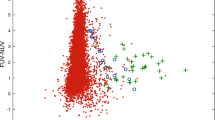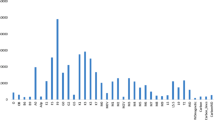Abstract
The domain of astrophysics involves the documentation of celestial bodies with the means of procuring supporting data which have evolved with technological advancements; the present procedure involving spectral data has received a healthy response with two recent prominent datasets. The collaboration of Computer Science and Astrophysics has been a blessing in disguise which has helped advance the research stagnant at the developing process. Observing an unexplored plethora of opportunities, the team has undertaken the task of inspecting the accuracy provided by the collected SDSS datasets to the sought-after problem of classification. The fundamentals of Astronomy within Astrophysics lie in the study of heavenly bodies under observation, and the query regarding the birth of Milky Ways has become prominent under curious scrutiny. The research implements comparative study between DR-16 and DR-17 datasets through usage of prominent machine learning algorithms—logistic regression, support vector machine, multilayer perceptron, and decision trees—to arrive at respective results. The mentioned models have been opted as they have a history of arriving at optimal solutions pertaining to the issue of classification. The efficiency of the process is promoted through data filtration. The filtered data is partitioned into training and testing sets, which is finally used to train the algorithm models, and the other half is utilized in the process of predicting the outcomes. Finally, the result with highest accuracy is declared as the most suitable algorithm.
Access this chapter
Tax calculation will be finalised at checkout
Purchases are for personal use only
Similar content being viewed by others
References
Xing F, Guo P (2004) Classification of stellar spectral data using SVM. In: International symposium on neural networks. Springer, Berlin, Heidelberg, pp 616–621
York DG, Adelman J, Anderson Jr JE, Anderson SF, Annis J, Bahcall NA, Bakken JA, Barkhouser R, Bastian S, Berman E, Boroski WN (2000) The Sloan Digital Sky Survey: technical summary. Astron J 120(3):1579
Beers TC (2020) The 16th data release of the Sloan Digital Sky Surveys. Astrophys J Suppl Ser 249:3 (21pp)
SDSS-IV Data Release 17 (DR17) [Online]. Available at: https://risweb.st-andrews.ac.uk/portal/en/datasets/sdssiv-data-release-17-dr17(6cc5bcc9-4dd8-4a37-8c9e-09d23064ad84).html
Kim J (2018) Machine learning approaches to star-galaxy classification. PhD diss., University of Illinois at Urbana-Champaign
Iyer GR, Vastare KC (2017) Deep learning for star-galaxy classification
Caniglia G, Krokos M, Becciani U, Gheller C, Nichol R, Comparato M, Costa A et al (2009) Visual discovery in large-scale astrophysical datasets; experiences using the Sloan Digital Sky Survey. In: 2009 second international conference in visualisation. IEEE, pp 10–15
Bai Y, Liu J, Wang S, Yang F (2018) Machine learning applied to Star–Galaxy–QSO classification and stellar effective temperature regression. Astron J 157(1):9
Brice M, Andonie R (2019) Classification of stars using stellar spectra collected by the Sloan Digital Sky Survey. In: 2019 international joint conference on neural networks (IJCNN). IEEE, pp 1–8
https://pweb.cfa.harvard.edu/research/sloan-digital-sky-survey-sdss
Pedregosa F, Varoquaux G, Gramfort A, Michel V, Thirion B, Grisel O, Blondel M et al (2011) Scikit-learn: machine learning in Python. J Mach Learn Res 12:2825–2830
Breiman L (2001) Random forests. Mach Learn 45(1):5–32
Pal M (2005) Random forest classifier for remote sensing classification. Int J Remote Sens 26(1):217–222
Masetic Z, Subasi A (2016) Congestive heart failure detection using random forest classifier. Comput Methods Programs Biomed 130:54–64
Jedari E, Wu Z, Rashidzadeh R, Saif M (2015) Wi-Fi based indoor location positioning employing random forest classifier. In: 2015 international conference on indoor positioning and indoor navigation (IPIN). IEEE, pp 1–5
Wan S, Liang Y, Zhang Y, Guizani M (2018) Deep multi-layer perceptron classifier for behavior analysis to estimate Parkinson’s disease severity using smartphones. IEEE Access 6:36825–36833
Zhao C, Gao Y, He J, Lian J (2012) Recognition of driving postures by multiwavelet transform and multilayer perceptron classifier. Eng Appl Artif Intell 25(8):1677–1686
Vashisth S, Dhall I, Saraswat S (2020) Chronic kidney disease (CKD) diagnosis using multi-layer perceptron classifier. In: 2020 10th international conference on cloud computing, data science & engineering (Confluence). IEEE, pp 346–350
Li B, Friedman J, Olshen R, Stone C (1984) Classification and regression trees (CART). Biometrics 40(3):358–361
Yoo SH, Geng H, Chiu TL, Yu SK, Cho DC, Heo J, Choi MS et al (2020) Deep learning-based decision-tree classifier for COVID-19 diagnosis from chest X-ray imaging. Front Med 7:427
Chern CC, Lei WU, Huang KL, Chen SY (2021) A decision tree classifier for credit assessment problems in big data environments. IseB 19(1):363–386
Chien C, Pottie GJ (2012) A universal hybrid decision tree classifier design for human activity classification. In: 2012 Annual international conference of the IEEE Engineering in Medicine and Biology Society. IEEE, pp 1065–1068
Wright RE (1995) Logistic regression
Shipe ME, Deppen SA, Farjah F, Grogan EL (2019) Developing prediction models for clinical use using logistic regression: an overview. J Thoracic Dis 11(Suppl 4)
Lombardo L, Mai PM (2018) Presenting logistic regression-based landslide susceptibility results. Eng Geol 244:14–24
Shen L, Tan EC (2005) Dimension reduction-based penalized logistic regression for cancer classification using microarray data. IEEE/ACM Trans Comput Biol Bioinf 2(2):166–175
Cristianini N, Shawe-Taylor J (2000) An introduction to support vector machines and other kernel-based learning methods. Cambridge University Press
Zendehboudi A, Baseer MA, Saidur R (2018) Application of support vector machine models for forecasting solar and wind energy resources: a review. J Clean Prod 199:272–285
Sethy PK, Barpanda NK, Rath AK, Behera SK (2020) Deep feature based rice leaf disease identification using support vector machine. Comput Electron Agric 175:105527
Singh V, Poonia RC, Kumar S, Dass P, Agarwal P, Bhatnagar V, Raja L (2020) Prediction of COVID-19 corona virus pandemic based on time series data using Support Vector Machine. J Discrete Math Sci Cryptogr 23(8):1583–1597
Turner CR, Fuggetta A, Lavazza L, Wolf AL (2019) A conceptual basis for feature engineering. J Syst Softw 49(1):3–15
Li J, Cheng K, Wang S, Morstatter F, Trevino RP, Tang J, Liu H (2017) Feature selection: a data perspective. ACM Comput Surv (CSUR) 50(6):1–45
Bai Y, Chen M, Zhou P, Zhao T, Lee J, Kakade S, Wang H, Xiong C (2021) How important is the train-validation split in meta-learning? In: International conference on machine learning. PMLR, pp 543–553
Scogin S, Karreth J, Beger A, Williams R (2019) BayesPostEst: an r package to generate postestimation quantities for Bayesian MCMC estimation. J Open Source Softw 4(42):1722
Author information
Authors and Affiliations
Corresponding author
Editor information
Editors and Affiliations
Rights and permissions
Copyright information
© 2023 The Author(s), under exclusive license to Springer Nature Singapore Pte Ltd.
About this paper
Cite this paper
Bhuvaneshwari, R., Karthika Devi, M.S., Vishal, R., Sarvesh, E., Sanjeevaditya, T.M. (2023). CoSSC—Comparative Study of Stellar Classification Using DR-16 and DR-17 Datasets. In: Kumar, S., Sharma, H., Balachandran, K., Kim, J.H., Bansal, J.C. (eds) Third Congress on Intelligent Systems. CIS 2022. Lecture Notes in Networks and Systems, vol 608. Springer, Singapore. https://doi.org/10.1007/978-981-19-9225-4_45
Download citation
DOI: https://doi.org/10.1007/978-981-19-9225-4_45
Published:
Publisher Name: Springer, Singapore
Print ISBN: 978-981-19-9224-7
Online ISBN: 978-981-19-9225-4
eBook Packages: Intelligent Technologies and RoboticsIntelligent Technologies and Robotics (R0)




